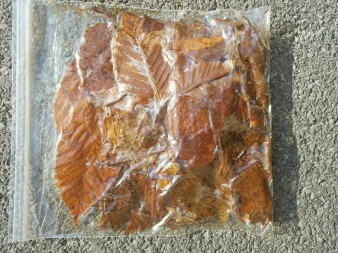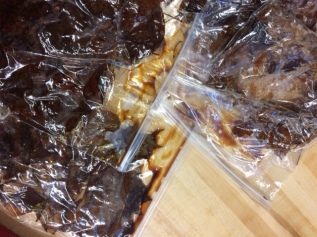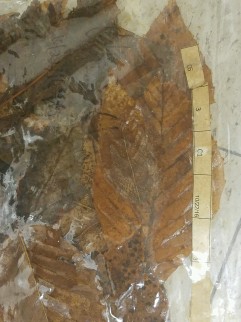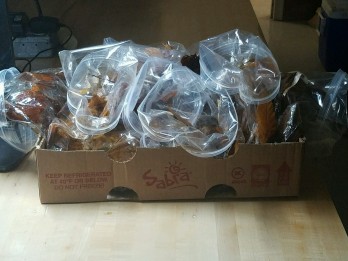11/19/2016:
Fall 2016 Leaf litter was collected 4 times so that Melany Fisk could analyze nutrient concentrations. Dry litter can be collected in paper bags. But wet paper bags can break and lose our samples. It was pouring rain on the 3rd collection date, so those samples were collected in plastic. For those of you who have been spending time trying to sort leaves that were collected very dry, these look easy to work with! 
Some of the samples are so wet, you can see the dissolved organic carbon that leached out. We were concerned about transferring these to paper bags to dry.
Trial and error has led to the development of procedures for drying in plastic, which will save time and the possibility of labeling errors. Permanent marker tends not to be so permanent on plastic, making the bag labels sometimes hard to read. To solve this problem, we printed labels and placed them inside the bag with the sample.

Plastic bags don’t wick water like paper and therefore drying the samples can be a challenge. If the plastic bags fall over and close, they tend not to dry. The proper drying of samples in plastic involves arranging them in rows with the the rim of the individual bags folded over to ensure that the bags stay up right and open to allow airflow while drying.

The bags are placed in a box, which also helps to minimize the time needed to place them in the oven. If the oven is open too long and cools off, it can overshoot our target temperature when it heats up again.
We tested both types of plastic bag overnight before we put any samples in the oven. We didn’t want melted plastic and lost samples!
Gretchen will be stopping in twice this week to weigh bags and determine how long it takes to dry them in plastic. Which is better, paper or plastic? Stay tuned.
